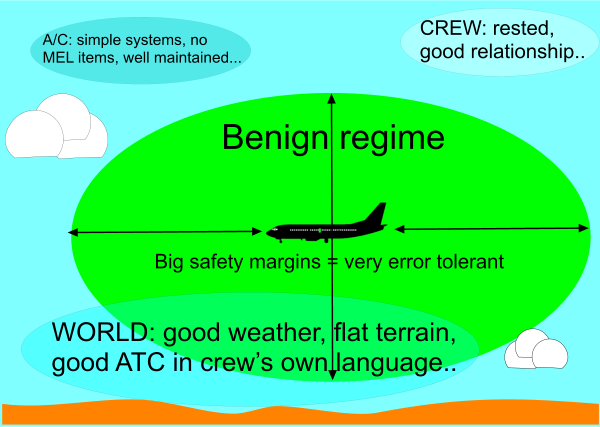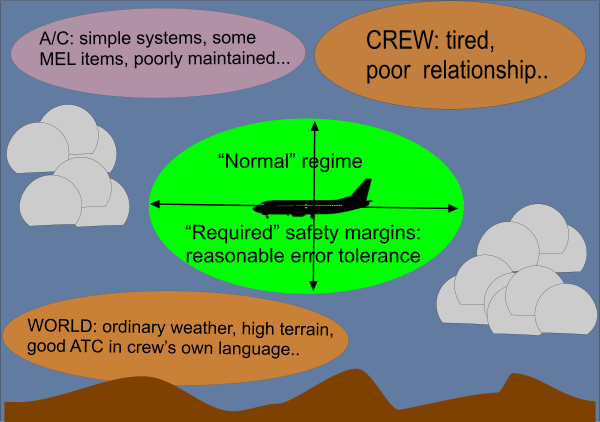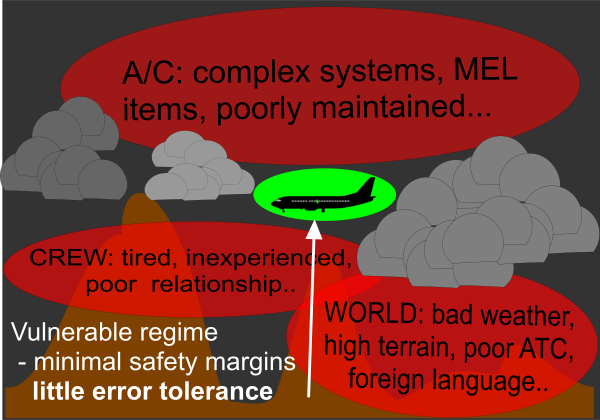Good and bad days.
Every flight is unique in its details, but has common characteristics with thousands of others. The extremely rare approaches that end in CFIT accidents have a combination of features that meant that an ordinary crew error that would have been survivable on almost all other occasions, had proved lethal.
On a "normal", every day, safe operation the aircraft exists in a "bubble" or "regime" which has a certain amount of tolerance of crew mistakes. This tolerance is reduced by threats in three broad domains - the specific aircraft in its current serviceability condition, the world (and in this case specifically the approach) it is flying in, and the individual pilots themselves. As risk factors in these domains build up over a spectrum from negligible to severe risk, the flight's regime becomes less and less tolerant of errors.
For example, "aircraft" factors include its complexity, existing MEL items, and maintenance standards that cause defects to arise in flight. The "world" includes terrain, the actual weather encountered compared to that forecast and then reported to the crew, ATC quality, and traffic density. And in terms of "people", the crew members' training and actual skills, experience, culture and language, personalities, individual concerns, fatigue and alertness.
When risk factors or threats coincide, vulnerability to errors is multiplied. This is of course why initial pilot training, when errors will be frequent, is conducted in a very error-tolerant regime in simple aircraft, over flat terrain, in good weather with low traffic density etc.

The level of safety expected by the public should be provided by operators meeting regulations which set required margins to provide a reasonable degree of tolerance for crew errors even after some threats arise, like the examples shown.

However, in the real world, these assumptions cannot always be met. Threats become bigger until on rare occasions they overwhelm the crew's capacity to deal with them, and the crew become very vulnerable to their own errors. Although obviously many other aspects are involved, some airlines generally operate in a much more error-tolerant regime overall than others. For example, US domestic operations are conducted with no issues of language to affect pilots' understanding either of their aircraft (training and manuals etc), or the environment (ATC communications), and with underlying high standards of training, regulation, and air traffic control.

It does not require major threats in all factors to remove error tolerance and bring about an accident: for example the Asiana B777 SFO accident did not contain major "world" threats in terms of weather or terrain. The aircraft was fully serviceable, but as in other events, the problem appeared to be crew unfamiliarity with aspects of its automation's complexity and the aircraft's basic flying qualities, factors which have been partly responsible for the current re-emphasis on manual flying.